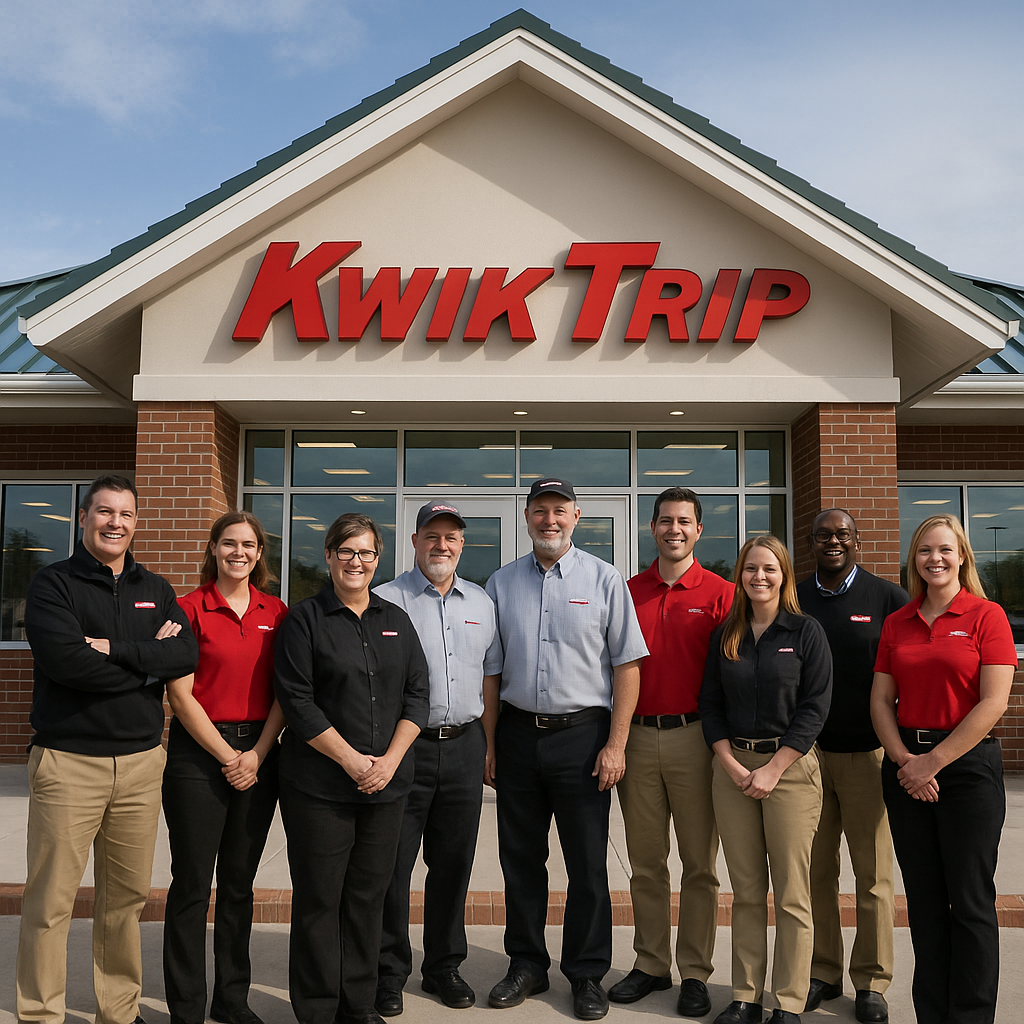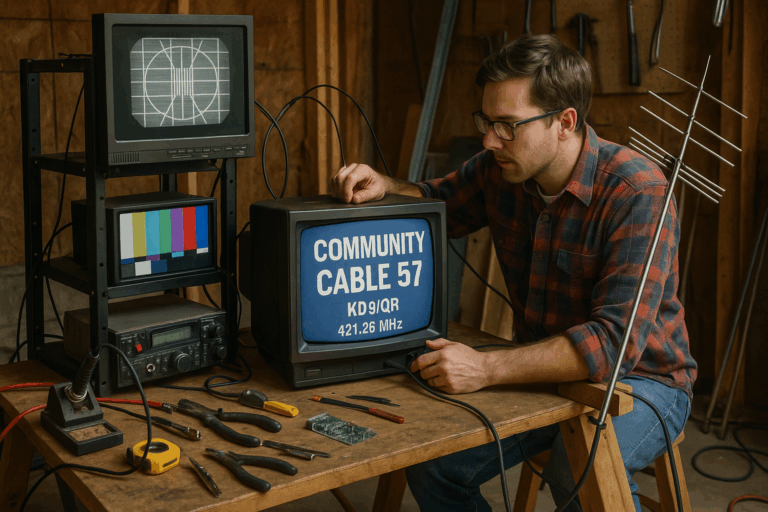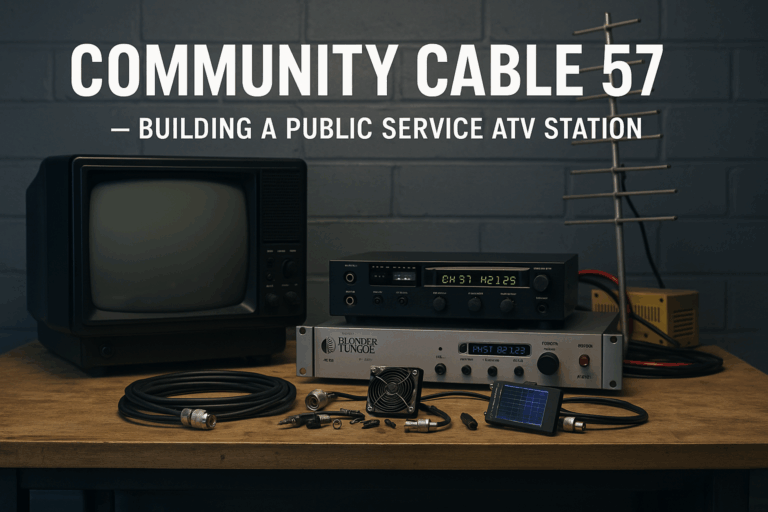
Humble Beginnings in Dairyland
Kwik Trip started in 1965 as a modest grocery in Eau Claire, WI—no gas pumps, no corporate empire—just fresh staples and friendly service. Founded by John Hansen and Don Zietlow, the company emphasized neighborhood accessibility and affordable groceries. The chain added fuel in the 1970s, moved headquarters to La Crosse, and under Zietlow’s 52-year leadership, quietly built an empire. By 2013, Kwik Trip had 400 stores. By 2021? 800. Today, they’re pushing 900 locations—and counting.
One on Every Corner (Seriously)
In Wisconsin, Kwik Trip’s red-and-white signs are as common as deer crossings. The chain builds aggressively, often placing stores on both sides of busy roads to catch traffic in either direction. Some intersections, like Madison’s Mineral Point Road, even boast twin Kwik Trips staring each other down. With stores across Wisconsin, Minnesota, Iowa (as Kwik Star), and now Illinois, Michigan’s U.P., and South Dakota, 2025 brings their first locations in North Dakota. The strategy is saturation, and it’s working.
Their newest stores are massive—8,000+ square feet, with indoor seating, expanded foodservice, and diesel islands. In some towns, older locations get bulldozed and rebuilt, double the size, without blinking. If you haven’t visited in a few years, you might drive past your old Kwik Trip and mistake it for a new shopping plaza.
Family-Owned, Fan-Favorite
Kwik Trip isn’t a faceless corporation. It’s still family-owned, and that matters. The Zietlows reinvest profits into infrastructure, fresh food programs, and employee bonuses instead of stockholder returns. A full 40% of profits go to employees, resulting in annual bonuses around 10%. They call staff “co-workers” and practice what they call “nice management.” Translation: treat people well, and they’ll smile back.
And customers notice. From cheap bananas (39¢/lb!) to genuinely kind service, Kwik Trip leans into its Midwest ethos. It feels more like a neighbor than a chain—and that connection has bred a loyalty few brands can touch.
The Competition? Not Even Close
Casey’s wins on pizza—no shame there—but their stores often lack the breadth of Kwik Trip’s offerings. Speedway, now under 7-Eleven, is functional but forgettable. Smaller chains like PDQ and Stop-N-Go? Absorbed. National brands? Just pumps. Kwik Trip doesn’t just survive competition—it absorbs it, improves it, and builds something bigger in its place.
And yes, Kwik Trip’s social media once said it best:
“Does Casey’s have the best gas station pizza? Yes. But does Casey’s have the worst everything else? Also yes.”
More Than a Gas Station
This isn’t just a fill-up spot—it’s a full grocery and fast-food operation. Stores offer hot meals, take-home dinners, smoothies, and even frozen yogurt. Glazers doughnuts (47+ million sold yearly), fresh bakery goods, in-house dairy, and take-home meals make it more supermarket than service station.
Kwik Trip’s vertical integration keeps prices low and quality high. Need dinner? A Kwik Trip Hot Spot counter has better odds than many fast-food joints. Need groceries? Milk, eggs, meat, produce, even lawn fertilizer—check.
Growth by Design
Kwik Trip expands with military precision. They scout prime real estate, build fast (often in four months), and double down when demand rises. Multiple stores in a town? Common. Acquiring competitors? Strategic. In 2023, they invested $151 million to expand production and logistics, ensuring shelves stay stocked from La Crosse to the U.P.
Each new build follows their “Gen 3” model—big, bright, with modern amenities and 24/7 operation. They’re also getting into EV charging with “Kwik Charge” stations already rolling out across Wisconsin, making sure they remain essential no matter how people power their vehicles.
A Cult Following with Midwest Charm
Kwik Trip isn’t just loved—it’s revered. People take wedding photos there. They wear branded socks. It’s not uncommon to hear Wisconsinites say, “Grab dinner at Kwik Trip?” without irony. Their social media is tuned to local humor, and their loyalty app is addictive. Charlie Berens jokes it’s the new town square—and he’s not wrong.
The chain leans into local culture with Packers promos, Badgers coffee deals, and custom snacks named after local sports stars. They’ve figured out how to make a gas station feel like home—and that’s no small feat.
What’s Next?
Kwik Trip is eyeing North Dakota this year, but don’t be surprised if Michigan’s lower half or Kansas comes next. Could it go national? Maybe not yet. But as Wawa pushes west, Kwik Trip pushes east, and the Midwest might just become the new battleground for America’s next great convenience war.
They’re also innovating—EV stations, self-checkouts, app ordering, sustainability efforts. The Zietlow family shows no signs of selling out, and their independence remains a pillar of the brand.
Final Thoughts
From a single Eau Claire grocery to a multi-state empire, Kwik Trip has managed to grow fast without losing its soul. It’s informative, yes. But it’s also funny—because there’s something uniquely Wisconsin about how much people love a gas station. It’s where you fuel up, grab a Glazer, and see your neighbors. It’s a reminder that when business is done right—with values, vision, and a little humor—people take notice.
So next time you hit the road and see that familiar sign, just know: you’re not stopping at a gas station. You’re making a Kwik Trip.


